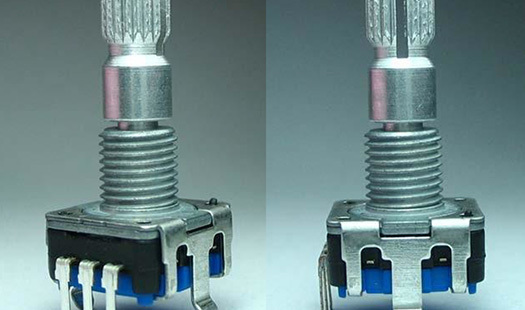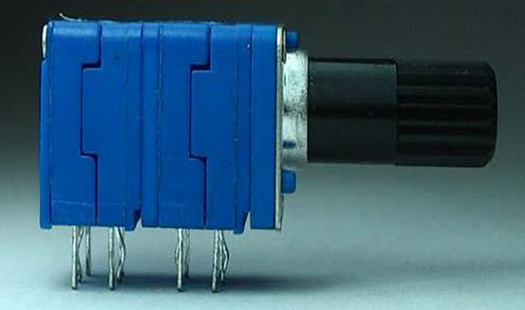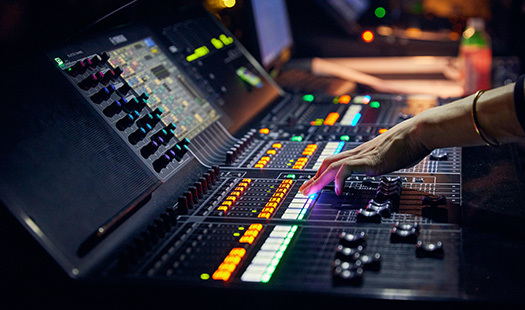Quality Over Quantity: The Importance of Potentiometer Selection in Audio
Jun 17,2025
Potentiometers are essential components in audio systems, acting as variable resistors that control the flow of electrical current. By adjusting the resistance, they effectively manage volume levels, tone quality, and other audio characteristics. In essence, the potentiometer is the gatekeeper of sound, playing a vital role in delivering a high-quality audio experience.
Potentiometers come in various shapes and sizes, but their core function remains the same: to provide a smooth transition between resistance values. This transition is crucial in audio applications where precision and nuance are paramount.
Types of Potentiometers Used in Audio
When it comes to audio applications, not all potentiometers are created equal. Understanding the different types available is crucial for selecting the right one for your specific needs.
1. Linear Potentiometers
Linear potentiometers provide a straight-line response as the knob is turned. This type is commonly used for volume control and tone adjustment in audio devices. They offer predictable and even adjustments, which is vital for achieving the exact sound desired.
2. Logarithmic Potentiometers
Logarithmic potentiometers, or audio taper potentiometers, are designed to match the human ear's perception of sound. The resistance changes logarithmically, allowing for finer control at low volumes and more gradual change at higher volumes. This makes them ideal for volume controls in audio applications.
3. Multi-Turn Potentiometers
Multi-turn potentiometers allow for finer adjustments due to their ability to rotate multiple times. These are often used in high-precision applications, such as mixing consoles and professional audio equipment, where small changes in resistance can significantly affect sound quality.
4. Digital Potentiometers
Digital potentiometers replace traditional mechanical components with electronic controls. They are often used in modern audio devices where compact size and programmable settings are required. Digital potentiometers can offer greater precision and reliability over their analog counterparts.
The Role of Potentiometers in Sound Quality
The selection of potentiometers directly affects sound quality in audio systems. A high-quality potentiometer can enhance audio clarity, maintain signal integrity, and reduce noise, while a lower-quality component may introduce distortion or unwanted artifacts.
1. Signal Integrity
Quality potentiometers are designed to minimize signal degradation. This is vital in audio systems, where preserving the fidelity of the sound is paramount. Using high-quality materials and precise manufacturing processes ensures that the potentiometer maintains signal integrity throughout its lifespan.
2. Noise Reduction
Low-quality potentiometers often introduce noise and static into the audio signal. This can detract from the listening experience and mask important details in the music. Opting for high-grade components that include features such as conductive plastic or carbon compositions can significantly reduce noise levels.
3. Durability
The durability of a potentiometer is equally important. In audio applications, components are frequently adjusted, leading to wear over time. Quality potentiometers are built to withstand the rigors of regular use without compromising performance. This ensures that the audio experience remains consistent and enjoyable for years to come.
How to Choose the Right Potentiometer for Your Audio Needs
Choosing the right potentiometer for your audio project is crucial. Here are several factors to consider:
1. Application
The intended application of your audio device will significantly influence your potentiometer choice. For example, a volume control will often require a logarithmic potentiometer, while tone controls may benefit from linear types.
2. Resistance Value
Different audio applications require varying resistance values. Ensure the potentiometer you select matches the specifications of your audio circuit to prevent signal loss or distortion.
3. Size and Form Factor
Consider the physical space available in your audio project. Some potentiometers are bulkier than others, so ensure you select one that fits within your design constraints while still providing the desired functionality.
4. Taper Type
As mentioned earlier, the taper type affects how the potentiometer responds to adjustments. Understanding the difference between linear and logarithmic types helps in selecting the best option for your needs.
5. Quality and Brand
Investing in reputable brands known for their quality components is essential. Research user reviews and expert recommendations to ensure that you are selecting a potentiometer that will perform reliably over time.
The Impact of Quality Potentiometers on Audio Performance
High-quality potentiometers can dramatically enhance the performance of audio systems. Users may notice a range of improvements, including:
1. Enhanced Clarity and Detail
Quality components provide clearer sound reproduction, allowing listeners to pick out subtle details in their music. This enhancement can transform a good audio setup into a great one.
2. Smooth Operation
A high-quality potentiometer provides a smoother adjustment experience. This means users can make gradual changes without jumping between levels, leading to a more refined audio experience.
3. Increased Longevity
Investing in quality components pays off in the long run. High-grade potentiometers are built to last, reducing the need for frequent replacements and ensuring consistent audio performance.
Common Mistakes in Potentiometer Selection
Even seasoned audio engineers can make mistakes when selecting potentiometers. Here are some common pitfalls to avoid:
1. Ignoring Specifications
Always consult the specifications of the potentiometer to ensure it meets the requirements of your audio project. Do not assume that all potentiometers will work interchangeably.
2. Overlooking Taper Types
Choosing the wrong taper type can significantly impact the usability of your audio device. Take the time to consider how users will interact with the controls and select accordingly.
3. Prioritizing Cost Over Quality
While it may be tempting to opt for cheaper components, doing so often leads to compromised audio quality. Investing in high-quality potentiometers is essential for achieving superior sound.
Maintenance and Care for Potentiometers
To ensure the longevity of your potentiometers, proper maintenance is essential. Here are some tips:
1. Keep Them Clean
Dust and debris can accumulate in potentiometers, leading to noise and interference. Regularly clean the potentiometer using appropriate tools and techniques to maintain optimal function.
2. Avoid Excessive Force
When adjusting potentiometers, avoid using excessive force. Gentle adjustments prolong the lifespan of the component and prevent damage.
3. Store Properly
When not in use, ensure that audio equipment is stored in a clean, dry environment to protect the potentiometers from moisture and dust.
Selecting the right potentiometer is vital for achieving high-quality audio performance. By understanding the various types, their roles in sound quality, and the importance of quality over quantity, audio enthusiasts can make informed decisions. Investing in high-grade potentiometers will not only enhance sound clarity and fidelity but will also ensure a smoother and more enjoyable listening experience. Whether you're an audio engineer or a hobbyist, the right potentiometer choice can transform your audio projects, setting you on the path to sonic excellence.
More Information
2025-07-04
More Information
2025-07-04
RECOMMENDED










